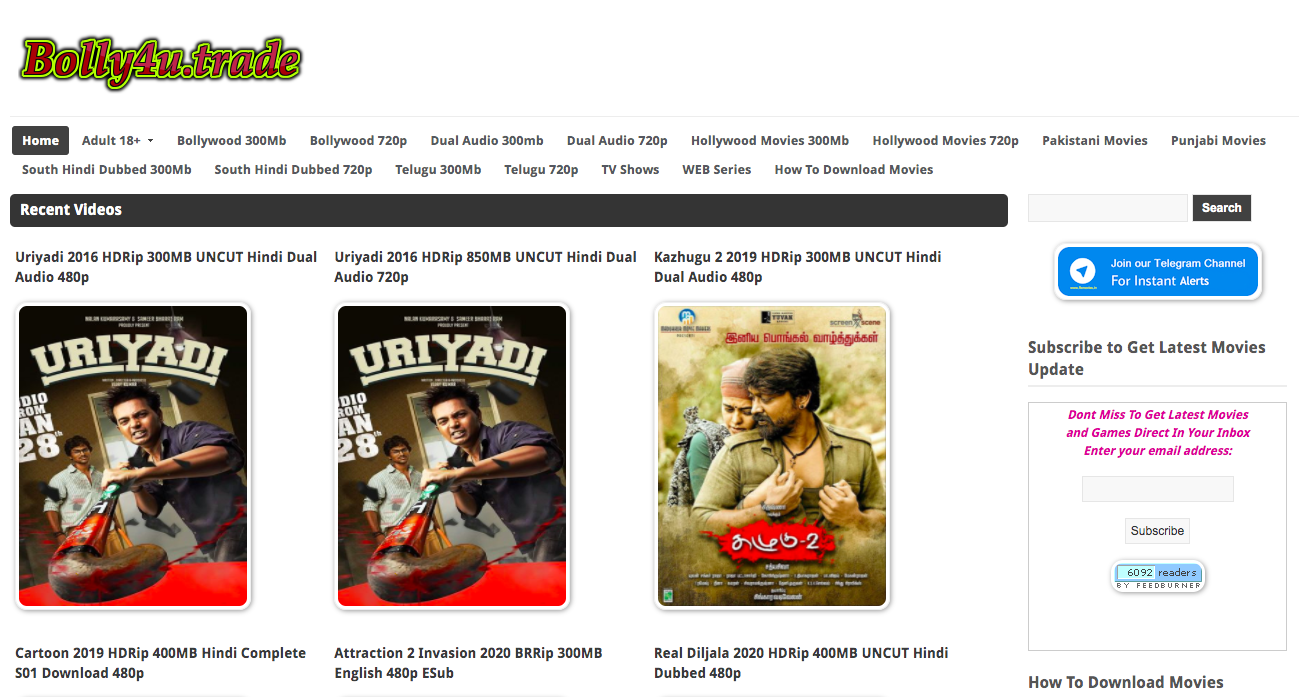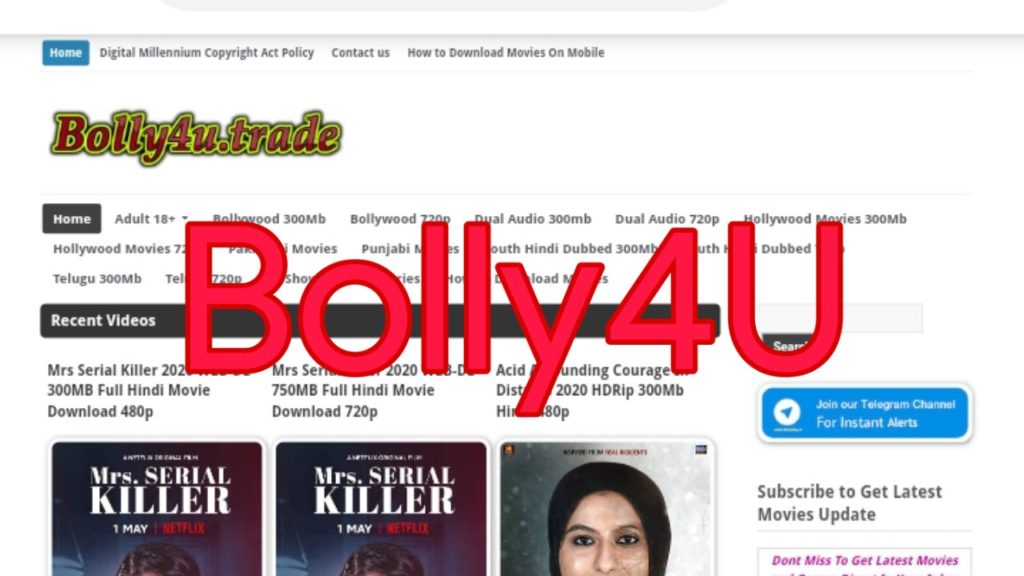Latest Bollywood Movies On Bolly4u Hub: Watch Now!
Is the digital realm truly offering a sanctuary for cinephiles, or is it merely a labyrinth of fleeting trends and questionable sources? The "bolly4u hub" phenomenon presents a compelling case study, illustrating how online platforms shape our consumption of cinema, particularly within the vibrant sphere of Bollywood.
The allure of instant access to the latest releases, coupled with a perceived freedom from the constraints of traditional distribution, has undeniably fueled the popularity of platforms such as "bolly4u hub". This online space, often characterized by its informal approach and the provision of content that might otherwise be inaccessible, has carved a niche for itself within the broader ecosystem of film consumption. The very existence of such hubs necessitates a critical examination of copyright, content creation, and the shifting dynamics between producers, distributors, and audiences. The narrative of "bolly4u hub," therefore, becomes far more intricate than a simple story of convenience; it evolves into a reflection of the digital age's complex interplay of accessibility, legality, and cultural influence. In this complex digital ecosystem, the platforms that emerge, like "bolly4u hub," become pivotal points of analysis when examining the modern movie consumption landscape.
| Category | Details |
|---|---|
| Platform Name | Bolly4u Hub |
| Primary Function | Providing access to Bollywood films and related content. |
| Content Offered | Streaming and downloadable Bollywood movies, often including newer releases, sometimes with subtitles. Also offered are trailers, music videos, and behind-the-scenes footage. |
| Accessibility | Typically accessible through a website; ease of access can vary. |
| Revenue Model | Advertising is the primary method of revenue generation. This can include display ads, pop-up ads, and sometimes even intrusive video ads. |
| Legal Status | Operates in a legally gray area. The distribution of copyrighted content without proper licenses is a violation of copyright law. |
| User Base | Predominantly caters to an audience interested in Bollywood films, including those who may not have access to legal streaming platforms or cinema screenings in their region. |
| Content Source | Often sources content from various sources, including other websites, rips of legitimate streaming sites, and even theater recordings (cam versions). |
| Impact on Industry | Significant negative impact on the film industry as a whole. This includes revenue loss for production companies, distributors, and theater owners. The accessibility and ease of pirated content can severely cut into legitimate sales. |
| Risks for Users | Users face risks that can include malware infection, as the websites often contain malicious advertisements or redirects. Theres also the risk of legal action, although it is far more common for legal action to be directed at the providers rather than the end-users. |
| Popularity Factors | Factors driving the popularity: wide selection of movies; often immediate access to new releases; no subscription costs; and a convenient platform for the user base. |
| Countermeasures | The film industry implements a variety of countermeasures. This includes suing website operators, issuing cease-and-desist letters, taking legal action to get websites shut down, and watermarking movies to trace leaks and take down illegal copies. |
| Reference Website | Copyright.gov (For copyright laws and information) |
The appeal of platforms like "bolly4u hub" extends beyond simple convenience. For many, especially those in regions with limited access to official streaming services or cinema screenings, these hubs offer a vital connection to Bollywood cinema. The cultural significance of Hindi films, spanning across generations and borders, should not be underestimated. The platform is not merely supplying entertainment; they facilitate a cultural experience that allows people to stay connected to their heritage.
However, this ease of access comes with a price. The operation of "bolly4u hub," like similar platforms, raises serious ethical and legal considerations. Copyright infringement is at the heart of the issue. These platforms often distribute films without obtaining the necessary licenses or permissions from the copyright holders. This not only violates copyright law, but it also directly impacts the financial sustainability of the film industry. The revenue generated from legal distribution channels, including theatrical releases, streaming subscriptions, and DVD sales, is crucial for financing future productions. The success of "bolly4u hub" and its ilk can have a detrimental effect on the creative ecosystem.
Furthermore, the user experience on these platforms often comes with hidden costs. The reliance on advertising revenue can lead to intrusive and potentially harmful elements, such as malware and phishing scams. The user risks are not merely financial. While the legal repercussions for individual users may be less severe than for the operators of the platform, the ethical implications remain, and there is an ongoing risk to the security of their devices.
The fight against digital piracy is a constant one, and the film industry is fighting back. There are numerous legal measures they can take. These measures include legal action, working with internet service providers to block access to pirate websites, and raising public awareness of the harm caused by piracy. The battle is often an uphill one.
The question of how best to engage with platforms like "bolly4u hub" involves balancing accessibility with the imperative to protect creative rights. The debate involves several stakeholders. Creators, distributors, and audiences each play a critical role. The shift to digital platforms demands that these stakeholders adapt their strategies. The future of Bollywood, in the digital age, may well depend on the choices made today by these stakeholders.
There are alternatives available, as the media landscape evolves. The rise of legitimate streaming services, which offer a wide selection of films at affordable prices, is a promising development. These services provide a legal and convenient way to access Bollywood content. The widespread adoption of such platforms might, in the long run, limit the appeal of platforms like "bolly4u hub."
Moreover, there is a growing need for the industry to create innovative strategies to reach a global audience. This includes exploring alternative distribution models, such as day-and-date releases, where films are made available simultaneously in theaters and on streaming platforms. This model can help to curb piracy and create a more even playing field for all players.
The rise of bolly4u hub and similar platforms highlights a crucial need for content creators and distributors to adapt to the ever-changing digital landscape. The focus should be on building stronger legal streaming platforms, promoting copyright awareness and taking proactive steps to protect their intellectual property. It is also crucial that media outlets continue to report the implications of these platforms, including the costs and risk to the end user.
The narrative surrounding "bolly4u hub" is, ultimately, a complex one. It illustrates the ongoing struggle to balance the public's desire for accessible entertainment with the need to protect the creative rights that enable the production of that very entertainment. The future of Bollywood, and indeed the entire film industry, may depend on the choices made today by all stakeholders involved.
The evolution of digital spaces has also changed how viewers consume media, particularly Bollywood films. The emergence of sites such as "bolly4u hub" demonstrates a continuous evolution of entertainment delivery methods, which also calls for ongoing examination of the impact on both creators and the audience.
The legal implications are multifaceted. Copyright laws are clear, and the distribution of copyrighted content without proper authorization is unlawful. This involves the potential for financial penalties and legal action against those who operate these platforms. In many cases, it can be difficult to track down the operators.
The user experience is another vital aspect. Platforms such as "bolly4u hub" rely on advertising revenue. This often translates to a frustrating and occasionally dangerous user experience. The intrusive advertising, and the associated malware, can create a significant risk to devices. Even for those who are more tech-savvy, the experience is often less than optimal. It can lead to dissatisfaction and ultimately drive users towards legitimate alternatives.
The conversation also includes the ethical considerations of consuming pirated content. While many users may not fully consider it, supporting sites that enable piracy has a ripple effect. This is detrimental to the entire film industry, from the actors and directors to the production crews and the many other individuals who work behind the scenes to bring these movies to life. Consumers who visit "bolly4u hub" are, essentially, contributing to a system that undermines the very industry that they are consuming.
The film industry has, and continues to, employ various strategies to combat piracy. This includes legal action against the operators of pirate sites, working with internet service providers to block access to illegal content, and using watermarks to trace the origins of pirated copies. It also includes awareness campaigns aimed at educating the public about the negative effects of piracy. The fight to preserve the rights of content creators continues.
The digital landscape is dynamic. The evolution of technology, and consumer behavior, require the industry to continually adapt their approaches. The focus on innovative strategies to combat piracy is essential. This includes more convenient and affordable access to content through legal platforms, as well as the use of emerging technologies like blockchain to improve copyright protection and tracking. These efforts will determine the future of content distribution.
The success of the platform, and others like it, is also due to a multitude of additional variables. The availability of the latest releases, sometimes within hours of their theatrical debuts, is a major draw. This allows users immediate access to the newest films, regardless of geographical location. The lack of subscription fees, a stark contrast to the cost of legal streaming services, also plays a part. This can particularly appeal to those who are budget-conscious. It may also lead viewers to consume films they would not otherwise have seen. The ease of navigation and use is a major draw.
The future of Bollywood will be shaped by how the industry responds to the challenges and opportunities presented by the digital age. Platforms like "bolly4u hub" are a symptom of a larger phenomenon. The key lies in the ability to balance the need for accessibility with the protection of creative rights.
Ultimately, "bolly4u hub" is more than a website. It's a reflection of the evolving relationship between the film industry, its audience, and the digital environment. It underscores the need for innovation, adaptation, and an unwavering commitment to ethical practices. The decisions made today will shape the future of Bollywood cinema, and how people around the world access and experience the magic of the movies.
The implications stretch far beyond simply watching a movie. It influences the broader cultural landscape, affecting how we consume art, our respect for creative ownership, and the evolving relationship between technology and entertainment. The long-term effects of these changes are still emerging.
The existence of bolly4u hub offers a useful perspective on the digital ages complexities. It is a case study in the ongoing tension between accessibility, the preservation of creative rights, and the ever-changing dynamics of media consumption. The story of "bolly4u hub" will continue to evolve as digital spaces and the Bollywood industry evolve.
As the digital ecosystem changes, one must look at the current landscape of access points for the media. "Bolly4u Hub" and similar platforms, are examples of this evolution and how the consumption of content changes to meet the needs of an increasingly digital world.


